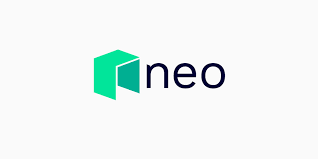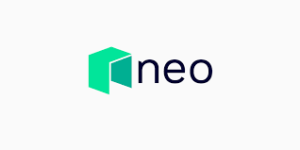Latest News
- Neo SPCC to discontinue HTTP Gateway domain; Neo Exporter tool updated
- SpoonOS announced as an operating system for AI agents on blockchain
- Flamingo updates tokenomics to reflect deflationary mechanics introduced by FLOCKS
- Neo releases Neo Bond token return schedule, outlines special case handling
Current Price
The current price of NEO is $5.59213
Introduction
Neo ($NEO), initially launched as Antshares in 2014 and rebranded in 2017, has positioned itself as a notable contender in the blockchain arena with its focus on creating a smart economy.
By integrating digital assets, identities, and smart contracts, Neo leverages a Delegated Byzantine Fault Tolerance (dBFT) consensus mechanism to enhance both scalability and security.
However, as we explore its key features, market performance, and potential challenges, it becomes evident that understanding Neo’s true potential requires a closer examination of its unique attributes and market dynamics.
Quick Overview
- Neo ($NEO) aims to create a smart economy through digital assets, identities, and smart contracts, enhancing efficiency and developer engagement.
- The platform utilizes a Delegated Byzantine Fault Tolerance (dBFT) consensus mechanism for improved scalability and transaction speed.
- Neo operates on a dual-token system, with NEO for governance and Gas for transaction fees, facilitating ecosystem functionality.
- The network supports multiple programming languages, making it accessible for developers and fostering a diverse dApp ecosystem.
- Navigating regulatory challenges is crucial for Neo’s credibility, requiring compliance with global standards and robust anti-money laundering measures.

Overview of Neo
Neo ($NEO) is a blockchain platform designed to facilitate the development of decentralized applications (dApps) and smart contracts, positioning itself as a key player in the evolving landscape of blockchain technology.
Initially launched in 2014 as Antshares, Neo underwent a rebranding in 2017, emphasizing its focus on creating a smart economy that integrates digital assets, digital identities, and smart contracts.
At its core, Neo employs a unique consensus mechanism known as Delegated Byzantine Fault Tolerance (dBFT), which allows for greater scalability and faster transaction processing compared to traditional blockchains.
This mechanism also enhances security, as it requires a supermajority of consensus nodes to validate transactions, reducing the likelihood of forks and malicious attacks.
Moreover, Neo supports multiple programming languages, such as C#, Java, and Python, making it accessible to a wider range of developers.
This flexibility is essential for fostering innovation within the platform.
In addition, Neo’s dual-token system, consisting of $NEO and Gas, serves distinct purposes: $NEO represents ownership and governance, while Gas is utilized for transaction fees and smart contract execution.
Key Features and Innovations
While many blockchain platforms endeavor for innovation, Neo distinguishes itself through several key features that enhance its functionality and usability. One of the most notable aspects of Neo is its dual token system, comprising Neo and Gas (GAS). This structure allows NEO holders to generate GAS, which serves as the fuel for transactions and smart contracts on the Neo network, thereby incentivizing investment and participation.
Another significant innovation is Neo’s support for multiple programming languages, including C#, Java, and Python. This flexibility enables developers to utilize familiar languages, promoting broader adoption and reducing the barrier to entry for new developers.
Additionally, Neo employs a delegated Byzantine Fault Tolerance (dBFT) consensus mechanism, which enhances transaction speed and network security by allowing a small number of delegated nodes to validate transactions, hence facilitating scalability.
Neo also emphasizes interoperability, aiming to bridge the gap between various blockchain platforms. This is achieved through its cross-chain capability, which enables seamless interaction with other blockchains, fostering a more interconnected ecosystem.
Collectively, these features position Neo as a formidable player in the blockchain landscape, focusing on developer accessibility and network efficiency.
Market Performance Analysis
In evaluating Neo’s market performance, it is essential to analyze price trends to understand the asset’s volatility and overall trajectory.
Additionally, examining volume and liquidity provides insights into market dynamics and investor participation.
Price Trends Overview
Analyzing the price trends of Neo reveals a complex landscape influenced by various market dynamics. Over the past year, $NEO’s price has experienced significant volatility, marked by sharp peaks and troughs, reflecting broader market sentiments and investor behavior.
The asset reached notable highs in early 2023, driven by positive developments in its ecosystem, including partnerships and technological advancements. However, subsequent price corrections have showcased the inherent risks within the cryptocurrency market.
The correlation between $NEO’s price movements and market sentiment is evident, particularly during periods of heightened regulatory scrutiny and macroeconomic uncertainty. For instance, market reactions to regulatory announcements often result in immediate price fluctuations, underscoring the sensitivity of cryptocurrencies to external factors.
Additionally, the performance of major cryptocurrencies, such as Bitcoin and Ethereum, can indirectly impact $NEO’s price trajectory, as investor sentiment often flows between these assets.
Volume and Liquidity Insights
The price volatility observed in Neo is closely intertwined with its trading volume and liquidity, which play significant roles in market performance. Analyzing trading volume provides insight into the level of interest and activity surrounding $NEO, influencing price movements and market depth. Higher trading volumes generally indicate robust investor engagement, which can lead to more stable price action.
Conversely, low trading volumes often correlate with increased volatility, as fewer trades can disproportionately affect price fluctuations.
Liquidity, defined as the ease with which an asset can be bought or sold without impacting its market price, is another critical factor. $NEO has exhibited varying levels of liquidity across different exchanges, which can impact its accessibility for traders.
When liquidity is high, market participants can execute larger transactions with minimal slippage, thereby reinforcing price stability. In contrast, low liquidity may exacerbate price swings and create challenges for traders attempting to enter or exit positions.

Market Sentiment Indicators
Market sentiment indicators serve as essential tools for gauging the collective attitude of investors towards $NEO and its potential future performance. These indicators, which include metrics such as the Fear and Greed Index, social media sentiment analysis, and trading volume trends, provide insights into how market participants perceive the cryptocurrency landscape.
Recent trends indicate a fluctuating sentiment surrounding Neo, often influenced by broader market movements and technological developments within the blockchain ecosystem. For instance, positive news regarding partnerships or technological upgrades tends to drive bullish sentiment, as evidenced by increased engagement on platforms like Twitter and Reddit. Conversely, negative regulatory news or market corrections can lead to heightened fear, resulting in significant sell-offs.
Additionally, the trading volume associated with $NEO reflects investor confidence. A rising volume, particularly during price increases, suggests a robust interest in the asset, while declining volume during downturns can imply waning enthusiasm.
Analyzing these sentiment indicators allows investors to make informed decisions and better anticipate potential price movements, ultimately highlighting the importance of understanding market psychology in the context of $NEO’s ongoing development and performance.
Use Cases and Applications
The Neo platform offers a range of use cases that highlight its versatility in the blockchain ecosystem.
Its smart contracts functionality enables developers to create decentralized applications with greater efficiency, while the emphasis on digital identity solutions enhances user verification and security.
In addition, Neo presents opportunities for decentralized finance (DeFi), allowing for innovative financial applications that can operate without traditional intermediaries.
Smart Contracts Functionality
Smart contracts, a pivotal feature of the Neo blockchain, enable automated, self-executing agreements that eliminate the need for intermediaries. This functionality is integral to a myriad of applications across diverse sectors, such as finance, supply chain management, and real estate.
By leveraging smart contracts, parties can create transparent, tamper-proof agreements that execute once predetermined conditions are met.
In the financial sector, smart contracts facilitate decentralized finance (DeFi) applications, allowing users to engage in lending, borrowing, and trading without traditional banking infrastructure.
Supply chain management benefits from enhanced traceability and accountability, as smart contracts automate processes such as inventory management and payment settlements based on shipment confirmations.
Moreover, in real estate, these contracts streamline transactions by automating the transfer of ownership and ensuring compliance with regulatory requirements.
The ability to program complex logic into smart contracts further enhances their utility, enabling multi-signature agreements and conditional transactions.
Digital Identity Solutions
Digital identity solutions on the Neo blockchain offer a transformative approach to verifying and managing personal identities in a decentralized manner. By leveraging blockchain technology, Neo enables individuals to maintain control over their personal information, reducing the risks associated with centralized data storage and identity theft.
The architecture of Neo supports the creation of secure, verifiable digital identities, allowing for a myriad of applications across various sectors.
- Enhanced Security: Utilizing cryptographic techniques to safeguard personal data.
- User Empowerment: Giving individuals the ability to manage their own identity information.
- Streamlined Processes: Facilitating quicker and more efficient identity verification for businesses and institutions.
These solutions address common challenges in identity management, such as fraud prevention, data breaches, and inefficient verification processes.
The integration of digital identity on the Neo platform not only enhances user privacy but also fosters trust among participants in digital transactions. As industries increasingly adopt blockchain technology, the implications of Neo’s digital identity solutions could redefine how identities are managed, paving the way for a more secure and user-centric digital landscape.
Decentralized Finance Opportunities
Building on the foundation of secure digital identities, the Neo blockchain presents significant opportunities within the domain of decentralized finance (DeFi).
Neo’s robust smart contract capabilities enable the creation of diverse financial applications, fostering an ecosystem where users can engage in lending, borrowing, and asset trading without intermediaries.
One prominent use case is the development of decentralized exchanges (DEXs) on the Neo platform, which allow users to trade cryptocurrencies directly, enhancing liquidity and reducing reliance on centralized entities.
Additionally, Neo’s integration with various stablecoins facilitates seamless transactions, promoting stability in value during trading activities.
In addition, the platform supports yield farming and liquidity mining, enabling users to earn rewards by providing liquidity to DeFi protocols.
This not only incentivizes participation but also enhances capital efficiency within the ecosystem.
Likewise, Neo’s focus on regulatory compliance and identity verification can potentially mitigate risks associated with DeFi, attracting institutional investors.
Regulatory Compliance and Challenges
Regulatory compliance presents a significant challenge for Neo as it navigates the complex landscape of global financial regulations. The cryptocurrency sector is often subject to rapidly evolving legal frameworks, which can create uncertainty for projects like Neo that aim to foster innovation in decentralized finance.
Compliance with different jurisdictions adds layers of complexity, as local regulations vary widely in their approach to digital assets.
Key challenges include:
- Diverse Regulatory Standards: Different countries have distinct regulations regarding cryptocurrency, creating a fragmented compliance landscape.
- Anti-Money Laundering (AML) Requirements: Neo must implement robust AML measures to guarantee compliance, which can be resource-intensive and technically challenging.
- User Data Protection: Adhering to data protection laws, such as the General Data Protection Regulation (GDPR) in Europe, is essential for maintaining user trust and avoiding hefty penalties.
As Neo seeks to establish itself in the global market, its ability to adapt to these regulatory challenges will be pivotal.
Effective compliance strategies not only mitigate risks but can also enhance Neo’s credibility and attract potential users and investors committed to regulatory adherence.
Investment Considerations
When evaluating investment factors for $NEO token, potential investors must sift through a variety of elements that influence its market position and future growth. One notable aspect is the platform’s unique value proposition within the blockchain ecosystem, emphasizing smart contracts and digital assets. $NEO coin aims to bridge the gap between traditional finance and blockchain technology, which may appeal to institutional investors seeking diversification.
Market volatility is another vital factor to evaluate. The cryptocurrency sector is characterized by marked price fluctuations, influenced by regulatory developments, technological advancements, and market sentiment. Investors should assess their risk tolerance in light of $NEO’s historical price movements and its responsiveness to broader market trends.
Furthermore, the effectiveness of NEO’s governance model, which includes community involvement and development initiatives, plays an essential role in its long-term viability. The commitment to continuous improvement and adaptation to regulatory changes can enhance investor confidence.
Lastly, potential investors should closely monitor partnerships and collaborations, as these can greatly impact $NEO’s adoption and utility in real-world applications. By weighing these factors, investors can make informed decisions about their engagement with Neo.
Frequently Asked Questions
What Is the Origin Story of Neo?
The origin story of Neo involves its foundation in 2014 by Da Hongfei and Erik Zhang, aiming to create a decentralized smart economy in China by integrating blockchain technology with digital identity and asset management.
Who Are the Main Developers Behind Neo?
The main developers behind Neo include Da Hongfei and Erik Zhang, co-founders of the Neo Foundation. Their expertise in blockchain technology has greatly contributed to Neo’s development, focusing on smart contracts and digital asset management.
How Does $Neo Compare to Ethereum?
$Neo and Ethereum both facilitate decentralized applications, yet differ in consensus mechanisms, programming languages, and governance models. Neo emphasizes digital identity and asset management, while Ethereum focuses on smart contracts and a broader developer ecosystem.
What Wallets Support $NEO Tokens?
Various wallets support $NEO tokens, including the official $NEO wallet, Exodus, and Ledger hardware wallets. Each option offers distinct features, such as enhanced security or user-friendly interfaces, catering to diverse user preferences and requirements.
Are There Any Notable Partnerships Involving Neo ?
Notable partnerships involving Neo include collaborations with various blockchain projects and enterprises aimed at enhancing digital identity, smart contracts, and decentralized applications, fostering a robust ecosystem that promotes innovation and interoperability within the blockchain landscape.
Wrapping Up
To summarize, Neo presents a robust framework for the development of a smart economy through its innovative integration of digital assets, identities, and smart contracts.
The platform’s unique dual-token system, combined with its dBFT consensus mechanism, enhances scalability and security.
Despite facing regulatory challenges, Neo’s emphasis on developer accessibility and interoperability positions it favorably within the decentralized finance landscape.
The continued evolution of its ecosystem will be critical in determining its long-term viability and market position.

